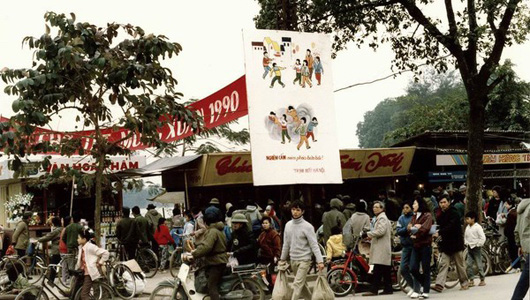Babetta is a moped (a pedal-engined motorcycle) produced by the JAWA factory in the former Czechoslovakia. JAWA originated from the merger of JAWA and an ammunition factory founded in 1928 called Ceske Municne a Korodelne Zavody Brno, which later changed its name to Povazska Strojarne (PS) in 1948.
Babetta was initially developed to meet the export demand to countries within the same bloc such as Hungary, Bulgaria, Romania, and East Germany, under the brand name Manet. Two versions were introduced, one with 23-inch wheels and another with 16-inch wheels. In 1970, the factory produced only 100 units for testing and marketing purposes. By 1971, the production of Babetta began officially. During this time, the rear shock absorber was not included, but the ignition system, a feature usually found on cars, was introduced.
.jpg) “The predecessor of Babetta”
“The predecessor of Babetta”
However, the Manet brand was no longer used by the factory and they wanted to replace it with a new name. The process of finding a suitable commercial name was not easy but quite interesting. At that time, in Czechoslovakia, there was a famous song called “Babettasla do sveta” (Babetta enters the world), in which Babetta was the name of a girl mentioned in the lyrics. The name and the content of the song seemed to be quite appropriate for JAWA to introduce their new product to the world market, and of course, Babetta was chosen and has remained with time.
In the early days, the sales volume of Babetta with 23-inch wheels did not meet expectations, so the factory had to introduce the second generation with smaller 16-inch wheels, named Babetta 206. This “girl” quickly gained popularity in the US and Germany, with 18,000 units sold in Germany out of a total of 60,000 units sold worldwide.
 Babetta quickly gained popularity worldwide
Babetta quickly gained popularity worldwide
In 1975, Babetta 207 was introduced with a rear shock absorber. Its brilliant success came in 1976, with 100% of the production units intended for export. Afterward, the models were equipped with the “Green-Light” lighting system. The maximum speed of the production units was only around 40 km/h.
In 1983, Babetta underwent a major update with the introduction of Babetta 210. It had a completely new design and an upgraded engine with a 2-speed automatic transmission. In 1986, PS transferred the entire production process to the rural area of Kolarovo near the Hungarian border. The lack of regular communication between the new and old factory led to some dissatisfaction with the products made in Kolarovo, but many generations of Babetta were developed here, all based on the 210 model.
.jpg) Babetta 210
Babetta 210
After the collapse of the socialist bloc in Eastern Europe, the journey of Babetta was also disrupted. PS joined with Piaggio to launch a new moped named Korado, based on the Babetta platform. As for the Babetta brand itself, it continued with the 225 model, and later came under the control of a moped factory in Riga, Latvia, resulting in the Babetta 134 model. The introduction of a smaller model did not help the brand avoid the crisis caused by political changes. In 1997, Babetta officially ceased production.
Babetta was very popular in Vietnam in the 1980s, but only relatively affluent families or those with relatives working as migrant workers in Czechoslovakia could afford to own one. However, even going abroad as a migrant worker required strict background checks, especially when going to Czechoslovakia, so owning a Babetta conveyed a sense of pride.
 The red Babetta stands out during the Lunar New Year
The red Babetta stands out during the Lunar New Year
In the capital city of a country where bicycles were the main mode of transportation, Babetta quickly became a symbol of pride and a dream for many young men in Hanoi. Some people even sold their houses on Khâm Thiên Street to afford two Babetta bikes, with a few ounces of gold to spare.
However, when Vietnam opened its doors and Japanese motorcycles flooded the market, Babetta gradually lost its appeal and was replaced by Honda Cub, DD (Dream) in red. It lost its “affection” from the young men of the capital and the affluent owners in the North, and slowly became a utility vehicle for transporting goods.
Now, Babetta has “gone far” with many Vietnamese people, but it is still remembered as a memory, a motorcycle that “shone in its time”.
Thảo Anh compiled (TTTĐ)









































